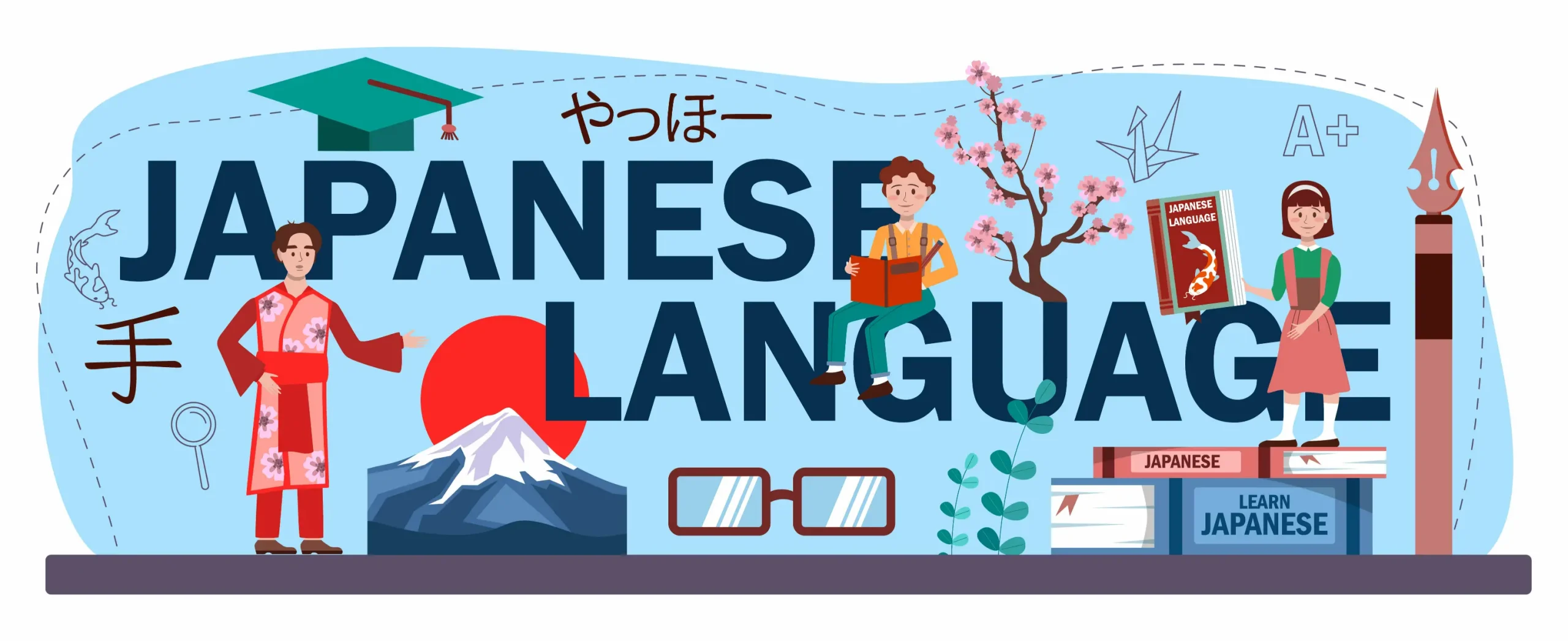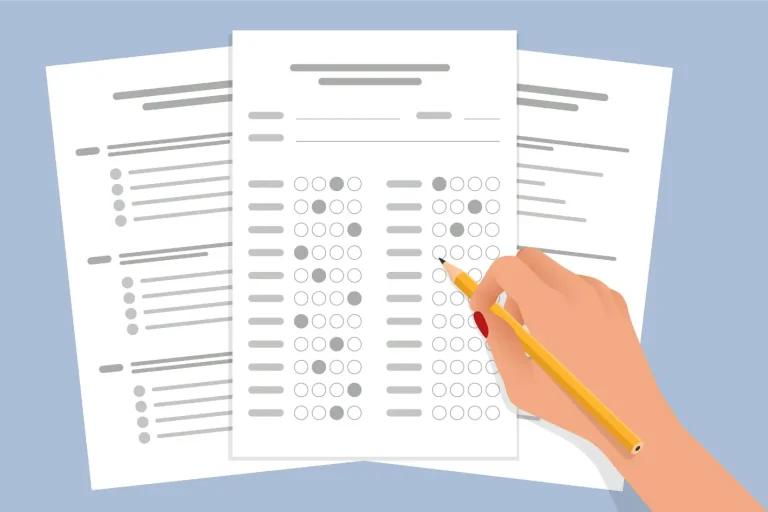1. What is on the AP Japanese Language and Culture exam?
The AP Japanese Language and Culture exam revolves around the following six main themes. You can expect to be tested on these themes across multiple questions in the exam. Below each theme is a list of example topics that will be tested on for each theme. Review the AP Japanese Course Guide for extensive details on how themes and skills will be tested on the exam.
Themes:
Families and Communities
- Social customs, traditions, values, rites of passage
- Perspectives of age, ethnicity, class, religion
- Citizenship, social welfare, and social justice
Personal and Public Identities
- National and ethnic identities
- Gender and gender roles
- Self-image and the role of the individual in society
Beauty and Aesthetics
- Defining beauty: perspectives of beauty in Japanese culture
- Arts, literature, fashion and design, film, architecture
Science and Technology
- Innovations and inventions
- Science and ethics
- Effects of science and technology on self and society
Contemporary Life
- Education and careers
- Lifestyle and pop culture
- Entertainment, tourism, holidays, and celebrations
Global Challenges
- Environmental issues
- Economic trends
- Japan’s role in international trade
Additionally, it’s important to familiarize yourself with the skills and learning objectives of the AP Japanese exam. See below for what is expected of you in your responses depending on the type of question:
Skills and Learning Objectives:
Comprehend Text: describe literal meaning
Make Connections: make connections among cultural and interdisciplinary information provided in texts
Interpret Text: interpret the distinguishing features of a text and interpret its meaning
Make Meanings: determine the meaning of familiar and unfamiliar words and use appropriate words for a given context
Speak to Others: understand and apply appropriate communication strategies and syntactical expressions in interpersonal speaking
Write to Others: understand and apply appropriate and varied communication strategies, syntactical expressions, and writing systems in interpersonal writing
Present Orally: plan and research an issue or topic, use appropriate vocal and visual strategies and vocabulary for the intended audience, express a perspective with details and examples
Present in Writing: plan and research an issue or topic, use appropriate writing strategies/systems and varied syntactical expressions, express a perspective with details and examples
2. What is the format of the AP Japanese exam?
The AP Japanese exam is 2 hours and 15 minutes long, with a 10-minute break between sections 1 and 2. Section 1 has 70 multiple-choice questions with listening questions in Part A and reading questions in Part B. Section 2 has 4 free-response questions with writing questions in Part A and speaking questions in Part B. See below for a detailed breakdown of each section. You can also review the AP Japanese 2024 Exam Overview.
Section | Question Type | Number of Questions | Scoring | Timing |
1 Part A | Multiple Choice | 30-35 | 25% | 20 min |
| Listening |
|
|
|
1 Part B | Multiple Choice | 35-40 | 25% | 60 min |
| Reading |
|
|
|
2 | Free-Response | 4 | 50% | 40 min |
| Writing |
|
|
|
| Text Chat Replies | 6 tasks | 12.5% | 10 min |
| Compare & Contrast Article | 1 task | 12.5% | 20 min |
| Speaking |
|
|
|
| Simulated Conversation | 4 tasks | 12.5% | 3 min |
| Cultural Perspective Presentation | 1 task | 12.5% | 7 min |
Section 1: Multiple Choice Questions
Section 1 Part A: Listening | |
Type of Listening Media | Number of Multiple-Choice Questions |
Public announcement | 2-3 |
Voice message | 3 |
Pre-recorded message | 3-4 |
Instructions | 3-4 |
Cultural presentation | 3-4 |
Radio news broadcast | 2-3 |
Radio broadcast | 2-3 |
Radio cultural documentary | 2-3 |
Uncontextualized dialogue | 3-4 |
School debate | 4-5 |
Section 1 Part B: Reading | |
Type of Reading Media | Number of Multiple-Choice Questions |
Journalistic article | 5 |
Short story | 5 |
Email inbox | 4 |
Letter | 4 |
Step-by-step instructions | 3 |
Travel brochure | 5 |
Section 2: Free-Response Questions
Section 2 Part A: Writing | |
Type of Writing Media | Time for Free Response Questions |
Text Chat | 10 min 90 seconds per message, 6 messages |
Students are given a topic and must respond to six text messages related to the topic. | |
Compare and Contrast Article | 20 min |
Students write an article comparing and contrasting two related topics OR students write an article describing two opposing sides of a single topic. Identify three aspects of the topic and highlight similarities and differences between the two and express your own opinion and reasons. | |
| |
Section 2 Part B: Speaking | |
Type of Speaking Media | Time for Free Response Questions |
Conversation Simulation | 3 min 20 seconds per prompt, 4 prompts |
Students are introduced to a speaker and conversation topic in English, then students participate in a simulated interpersonal conversation in Japanese. | |
Cultural Perspective Presentation | 7 min 4 min to prepare, 2 min to speak |
Students present their own view or perspective on a Japanese cultural practice or product. | |
3. AP Japanese Language and Culture Exam Sample Questions
To further familiarize yourself with how the AP Japanese exam will look, check out the following sample questions. See below for one sample multiple choice question for Section 1 and one sample free-response question for Section 2.
Multiple Choice Questions
This is a sample listening question. You cannot play the audio from this blog, hence the written transcript is provided. However, the written transcript will not be available on the exam. Note how you can listen to the listening material twice before answer the questions. There are four questions on this one audio message.
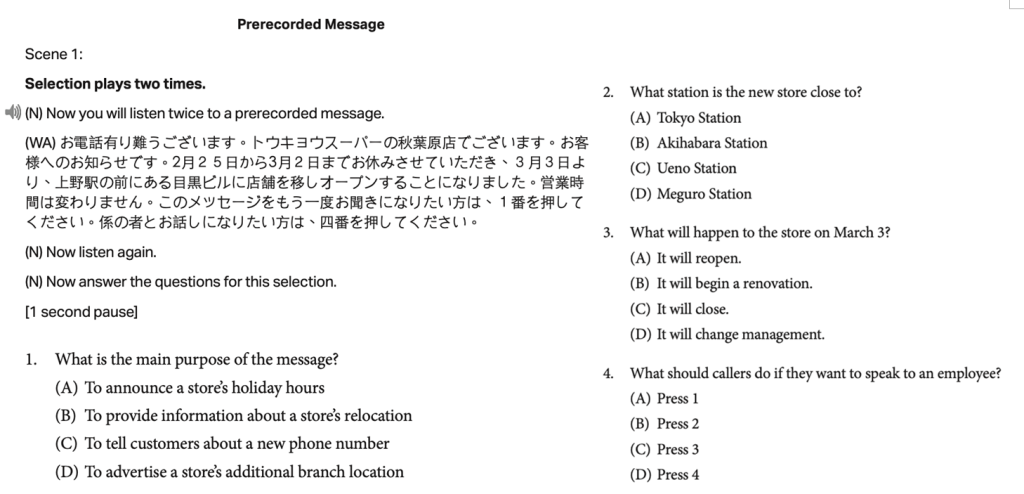
Free-Response Question
This is a sample writing question. Carefully read the directions and respond as if you were texting a friend in Japanese. Even though this is in a text chat format, make sure you have accurate grammar and use complex sentence structure and vocabulary.
Text Chat Sample 1
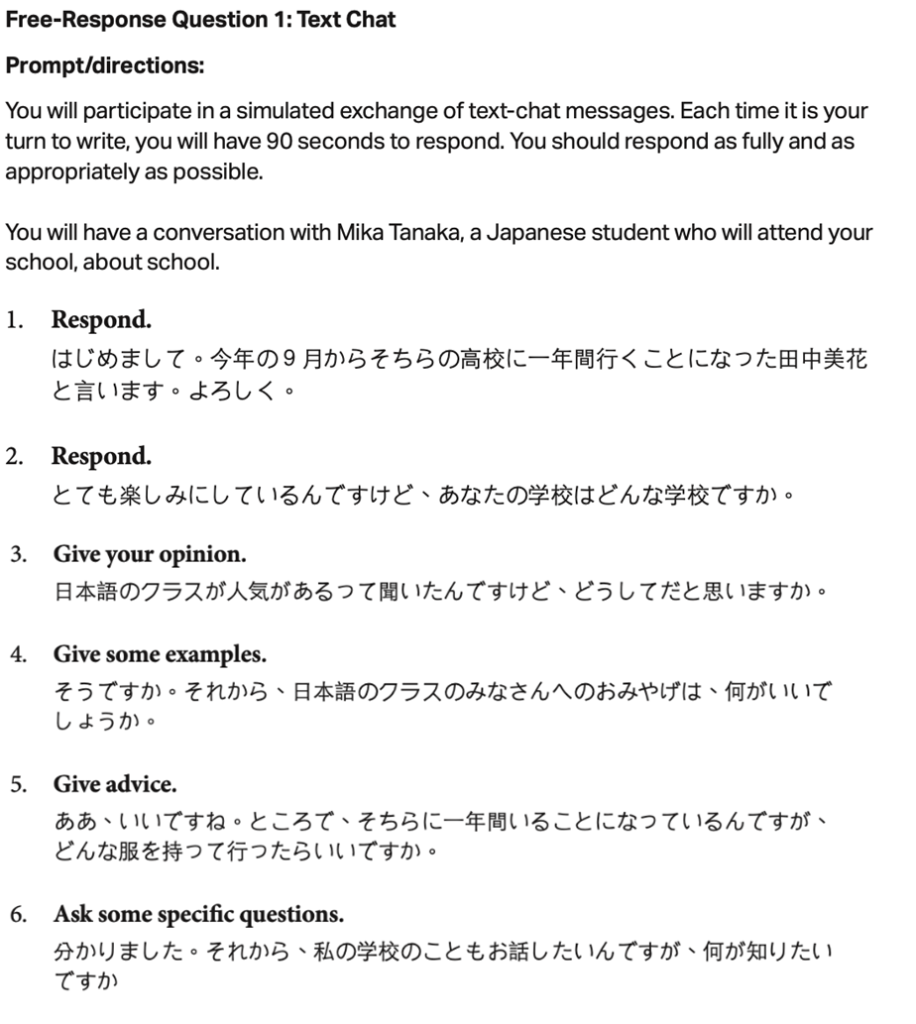
This is a quick reminder that the exam is held online, and the setup of the questions won’t look like the images above. See below for screenshots of the actual exam interface.
Text Chat Sample 2
This is another sample writing question for the text chat questions. As you can see, you will only see one text message at once. You will write your answers in the bottom right-hand box.
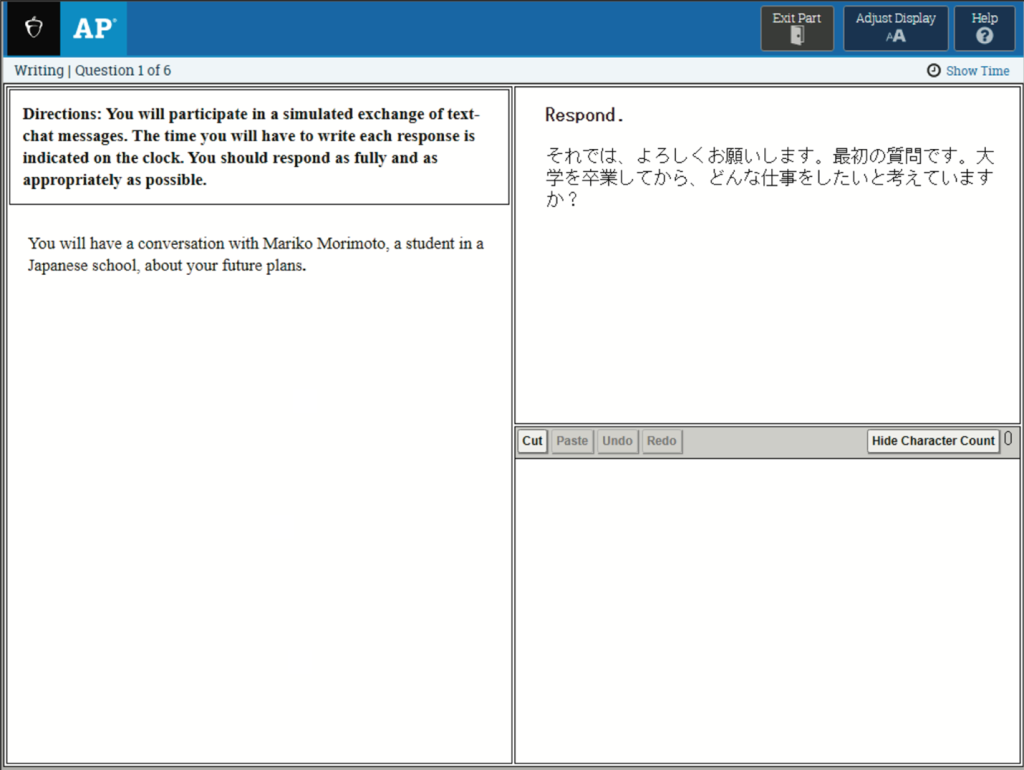
Cultural Perspective Presentation Sample
This is a sample speaking question where you will give a short oral presentation. Carefully read the topic provided in English, outline your speaking points in bullet points (scratch paper will be provided on the day of the exam), and speak confidently and clearly. If possible, present a personal memory or connection to the Japanese cultural topic being discussed—it’s good to make your presentation as unique and personal as possible.
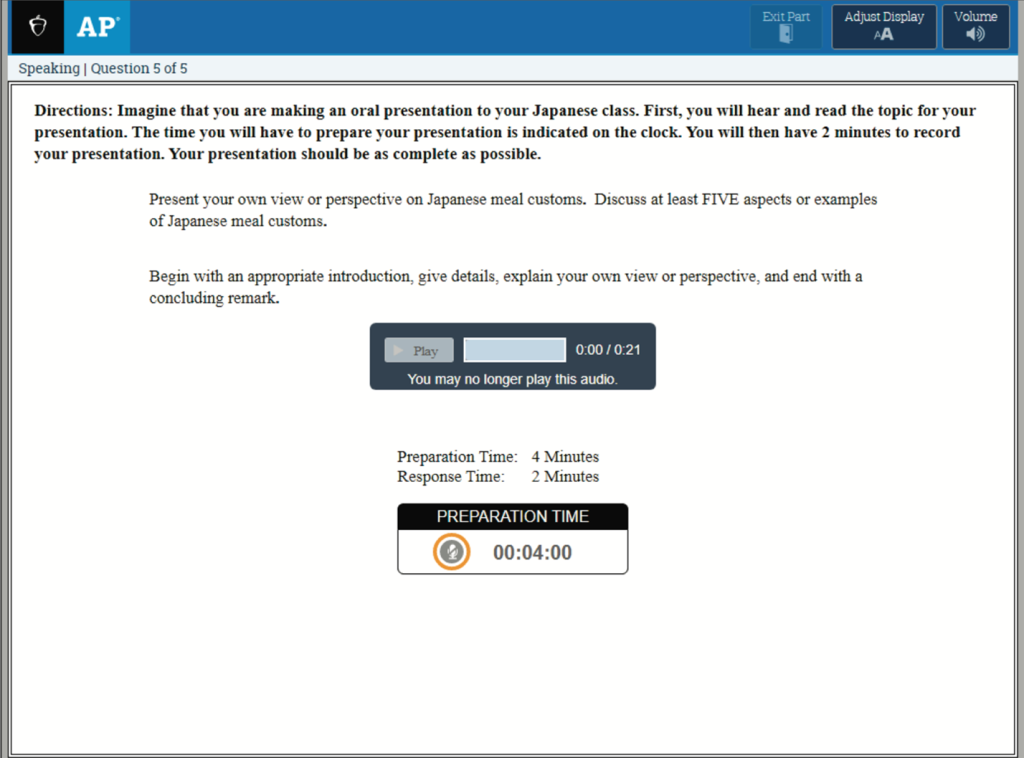
4. How is the AP Japanese exam scored?
All AP exams are scored out of 5 (full score is 5/5).
In the AP Japanese exam, each of the four subsections (Listening, Reading, Writing, and Speaking) accounts for 25% of your final exam score.
Multiple choice questions test Listening and Reading. Your score is calculated intuitively based on percentage of correct answers.
Free-response questions test Writing and Speaking. There are four free-response questions, and each is scored out of 6 points. Below are rubrics on what it takes to get a 6/6 in different types of free response questions.
Question 1: Text Chat

Question 2: Compare and Contrast Article
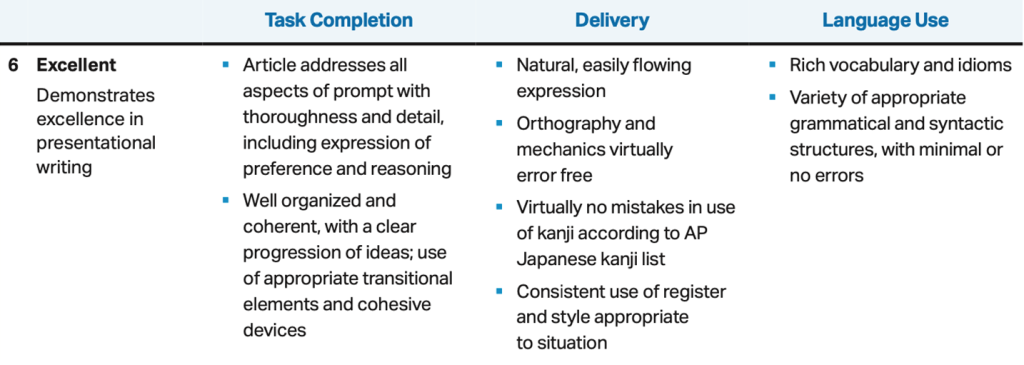
Question 3: Conversation

Question 4: Cultural Perspective Presentation
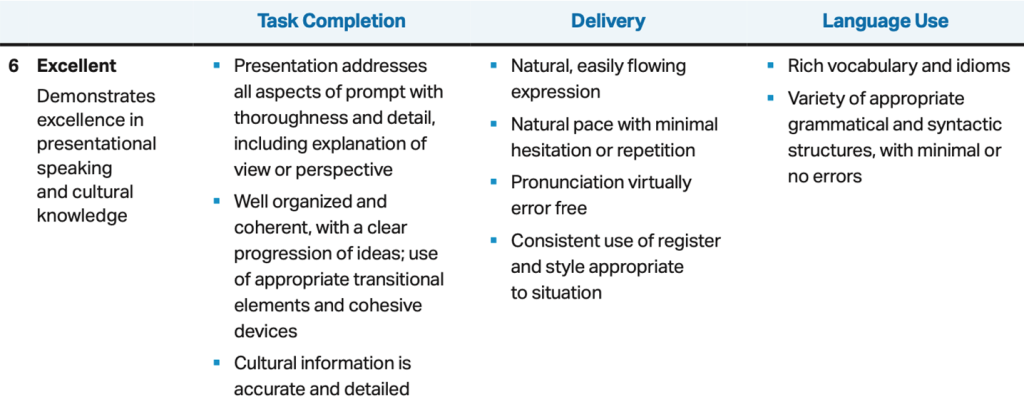
5. When is the AP Japanese exam?
The latest AP Japanese Language and Culture exam was on Thursday May 16, 2024, 12PM Local. Every year, the exam is held near the end of the school year in May.
6. What level is AP Japanese?
A good, quick way to determine if you’re ready for the AP Japanese exam is to read the list below and see how many words you understand. This is a list of Kanji you should know for the AP Japanese exam:
悪 安 暗 以 意 医 育 一 員 引 飲 院 右 雨 運 映 泳 英 駅 円 園 遠 横 屋 温 音 下 化 何 夏 家 科 歌 火 花 荷 画 会 回 海 界 皆 絵 開 階 外 学 楽 活 寒 漢 間 関 館 顔 願 期 機 帰 気 記 起 休 急 泣 究 牛 去 魚 京 強 教 橋 業 局 近 金 九 空 係 兄 形 経 計 決 結 月 犬 見 験 元 現 言 個 古 五 午 後 語 公 口 向 好 工 広 校 港 考 行 降 高 号 合 国 黒 今 困 婚 左 最 歳 祭 際 作 昨 雑 三 山 残 仕 使 四 始 姉 子 市 思 指 止 私 紙 試 事 字 寺 持 時 次 治 自 辞 式 七 失 室 実 写 社 者 車 若 主 取 手 酒 受 授 州 秋 終 習 週 集 住 十 重 宿 出 術 春 初 所 暑 書 女 商 小 少 笑 上 乗 場 色 食 信 寝 心 新 森 神 親 身 進 人 図 水 数 世 制 成 晴 正 生 西 青 静 昔 石 赤 切 接 節 説 雪 先 千 専 川 洗 線 選 前 然 全 組 早 相 走 送 贈 側 足 速 族 続 卒 村 多 太 打 体 対 待 貸 台 大 第 題 達 単 短 男 知 地 池 置 遅 茶 着 中 昼 注 朝 町 調 長 鳥 痛 通 低 定 庭 弟 的 天 店 転 点 伝 田 電 登 都 度 土 冬 島 東 答 頭 働 動 同 道 特 読 内 南 難 二 肉 日 入 熱 年 背 配 買 売 白 八 発 半 反 飯 晩 番 非 飛 美 鼻 必 百 氷 表 病 品 不 付 夫 婦 父 部 風 服 払 物 分 文 聞 平 別 変 便 勉 歩 母 方 法 忘 忙 北 本 妹 枚 毎 末 万 味 未 無 名 明 面 木 目 問 門 夜 野 薬 友 有 由 遊 夕 予 曜 様 洋 用 要 来 絡 落 利 理 立 留 旅 両 料 力 林 冷 礼 練 六 和 話
7. How do I prepare for the AP Japanese exam
As defined by CollegeBoard, the AP Japanese exam’s level of difficulty is for students who have completed approximately 300 hours of college-level classroom instruction. Typically, the standard way to prepare for the AP Japanese exam is to take the associated course for the entire school year. However, many high schools in the U.S. don’t offer AP Japanese, leaving students to study on their own or seek out a tutor.
Self-Study Tips for AP Japanese
Review official AP content
- Test yourself with previous AP Japanese free-response questions.
- Try out online resources recommended by AP Japanese teachers.
- The AP YouTube channel has a playlist of lessons on AP Japanese. This includes videos teaching important cultural knowledge based on the themes (see the beginning of this blog) as well as tips on how to write and present well based on AP criteria.
- Join the AP Japanese Language and Culture Community on AP Central
Use flashcards to learn vocabulary and the recommended Kanji list (see above)
- There are countless AP Japanese study sets on Quizlet
- If you are looking for both study notes and flashcards, Knowt is a good resource
Check out Japanese YouTube videos
- Watch “Day in the Life of a Japanese High School Student” vlogs to familiarize yourself with colloquial Japanese and get an insider view on Japanese culture.
Listen to Japanese podcasts
- Look up “Learn Japanese” on Spotify/Apple Music. Some channels with high reviews are Japanese with Shun and Learn Japanese with Masa sensei!
Read in Japanese
- 走れメロス (Run, Melos!) by 太宰治(Osamu Dazai) is a famous classic short story that’s taught widely in Japanese middle high schools. Depending on your level, do a Google search of “books for Japanese elementary/middle/high schoolers.”
- Follow some Japanese social media influencers for daily microdoses of Japanese in Tweets, Instagram posts, YouTube Shorts, TikToks, etc.
Use fun language-learning apps
- Duolingo offers courses in Japanese. Although this platform is insufficient to bring you up to par at the AP level, it’s a fun way to get some extra minutes of practice while you’re on the bus, waiting for your food at a restaurant, etc.
(If possible) Practice with a Japanese speaker
8. Take Aralia Education’s AP Japanese prep class!
If your school doesn’t offer AP Japanese, the best alternative is to take an online class with a professional education platform. Aralia Education offers 1:1 or small group online classes for AP Japanese exam preparation. With a small student-to-teacher ratio in every Aralia class, students receive more detailed and effective instruction from our award-winning teachers. Aralia’s team of expert instructors comes from former CollegeBoard AP exam readers and the nation’s top 10 college preparatory high schools. Aralia’s AP Japanese prep class will teach you all the language skills and cultural background you need to ace the AP Japanese exam. Students will also go through official AP Japanese practice exams and review real test questions— you’ll leave the course feeling confident and prepared for the AP Japanese exam!

AP Japanese Language and Culture
In the AP Japanese Language and Culture, students will learn the fundamental elements of the Japanese language, including pronunciation, grammar, vocabulary, and culture. With a focus on both content and test preparation, you’ll leave the course feeling confident and prepared for the AP exam. You’ll engage in interactive conversations, reading and writing assignments, and other activities designed to improve your speaking, listening, reading, and writing skills in Japanese. You’ll also gain a deeper understanding of Japanese culture through a variety of cultural activities and discussions.

